I spent the day working in a 2-star Michelin restaurant where dinner costs $300. I sliced sashimi, made dessert, and was shocked by the kitchen's calm vibe.
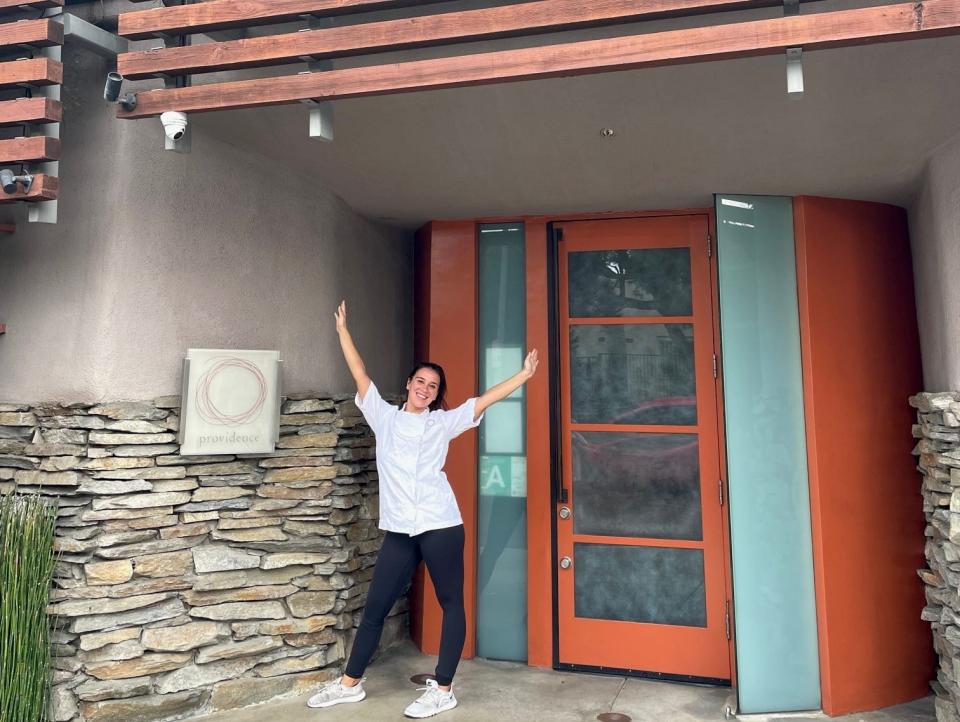
I spent the day shadowing chef Michael Cimarusti and his staff at Providence, a two-star Michelin restaurant.
I helped make chocolate, sliced sashimi, and spoke to everyone from the prep cooks to head chefs.
I was wowed by how calm the kitchen felt throughout the day, and how essential every person was to its success.
As someone who grew up loving food and cooking shows, I always wondered what it'd be like to work in a kitchen. And, lucky for me, the two-star Michelin restaurant Providence opened its doors.
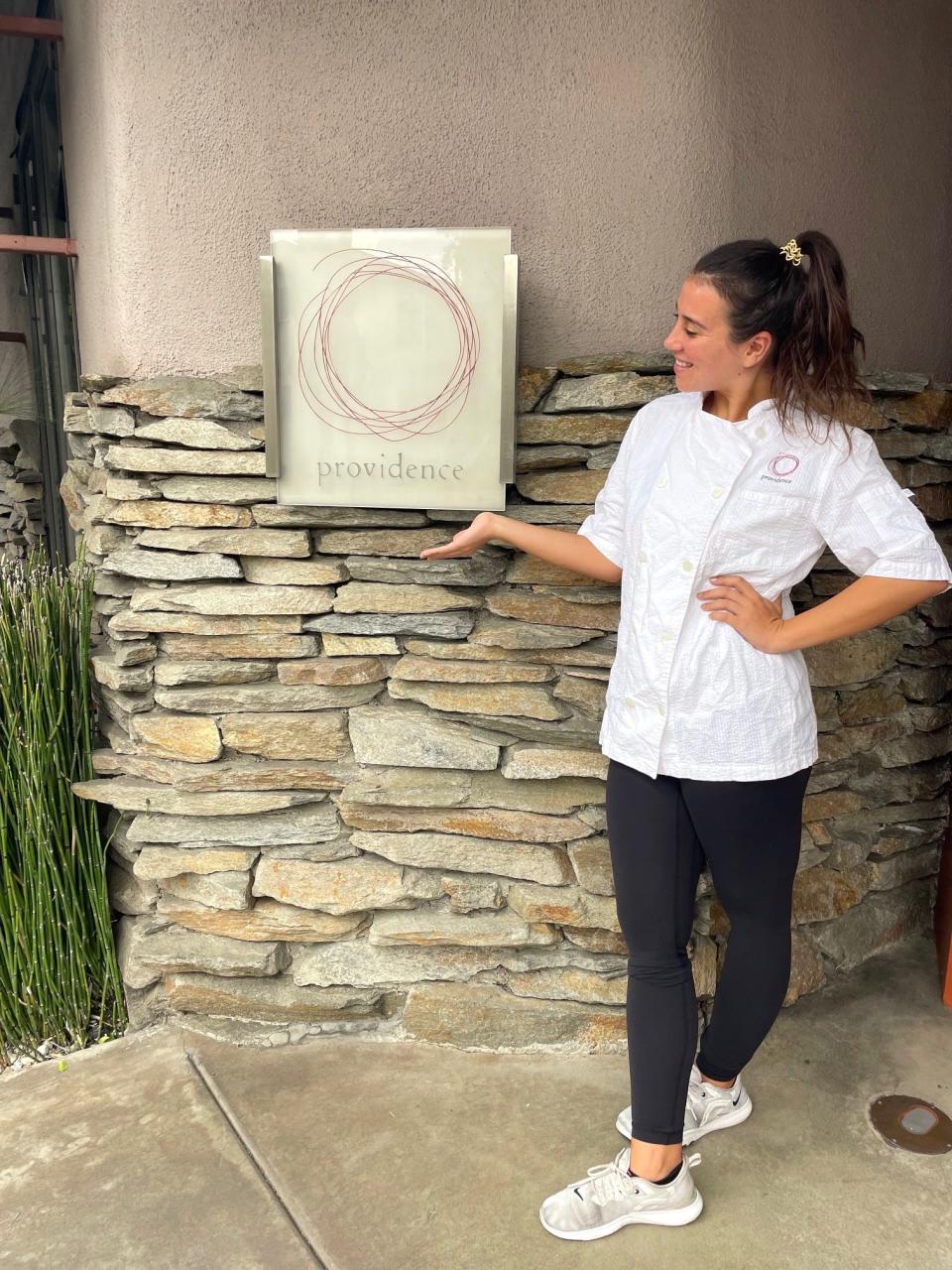
The restaurant business — and the people who work in it — has long been a fruitful pop culture subject, especially in recent years. "The Menu" satirized the world of fine dining, "The Bear" peeled back the brutal pressures of culinary perfection, and Gordon Ramsay launched a successful reality TV career by portraying an intense, foul-mouthed chef on "Hell's Kitchen."
It's a world that's always captivated me, especially as someone who barely knew how to cook just a few years ago. As my skills slowly began to improve during the pandemic, I found myself wondering what it'd be like to spend a day among some of the world's most talented chefs.
And I got to do just that with chef Michael Cimarusti and his incredible team at Providence in Los Angeles, California.
@foodinsider We got to go behind the scenes at one of LA’s top restaurants. Is this how you thought a Michelin star restaurant is ran? #michelinstar #finedining #themenu #thebear #foodinsider ♬ Dramatic Classic / Theme - SOUND BANK
There are only four restaurants in California with two Michelin stars. Providence is one of them.
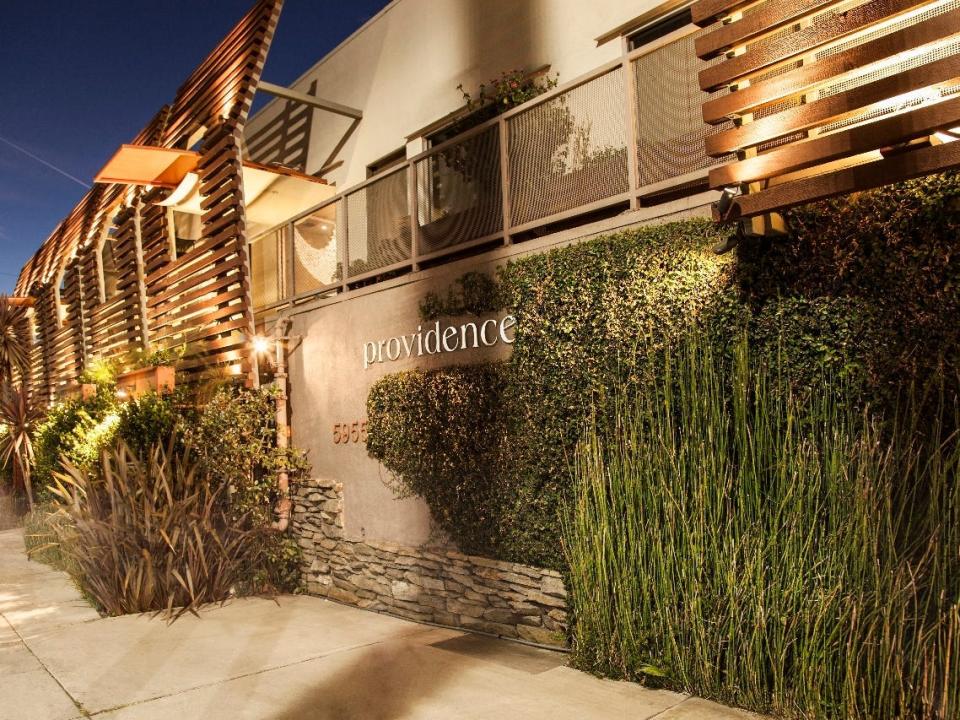
Providence — which is owned by Cimarusti, his wife (and Providence pastry chef) Crisi Echiverri, and Donato Poto, the restaurant's general manager — has held onto its two Michelin stars for over a decade.
The Hollywood spot has won much praise, and plenty of fans, for its commitment to sustainable seafood in the world of fine dining.
Seafood was a natural fit for Cimarusti, who told me: "Before I was ever a cook, I was a fisherman."
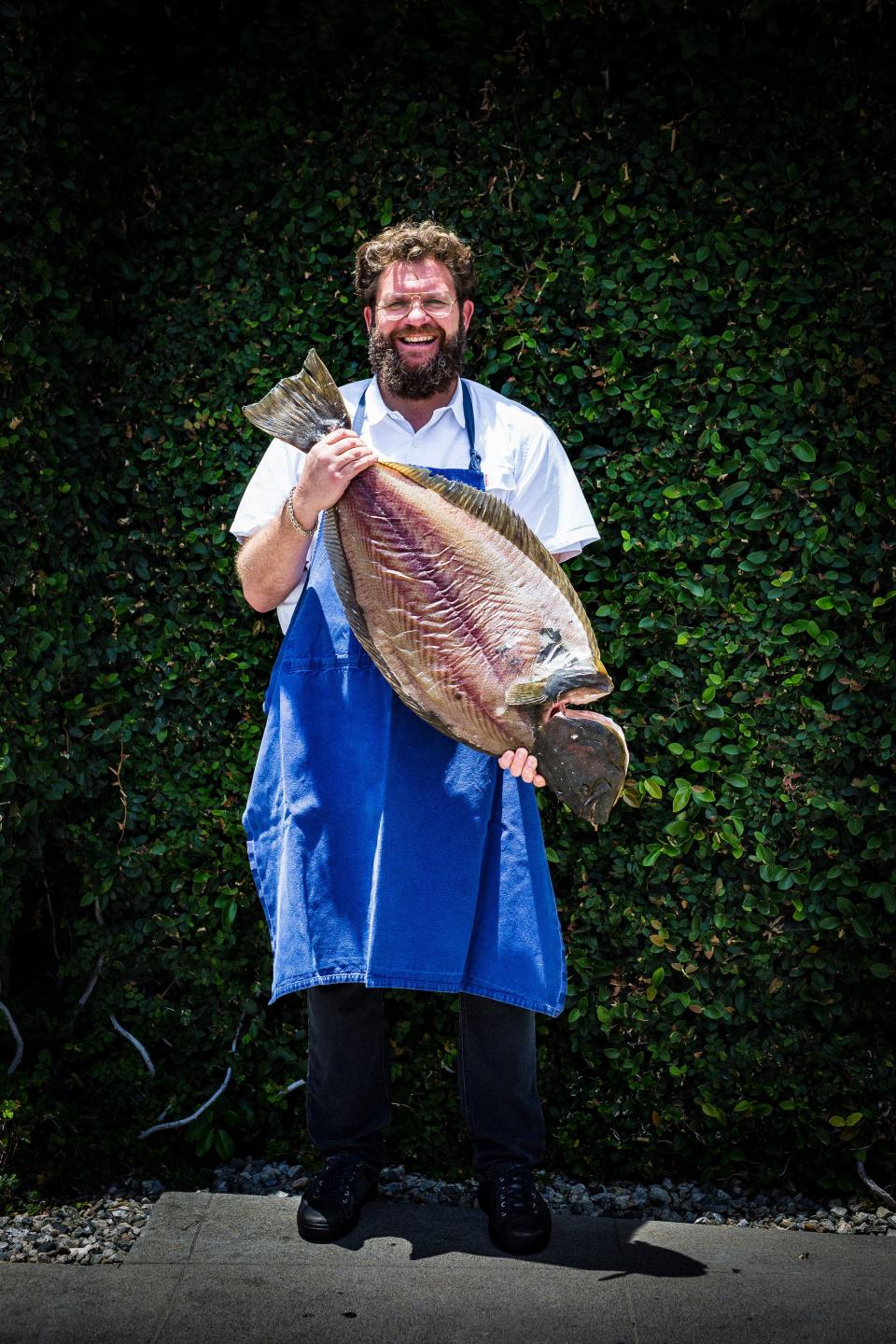
"I fished every day of my life when I was a kid," he said. "We had a little pond a half-mile from my house that I'd go to every day after school."
After turning his attention to cooking, Cimarusti worked his way into some of the world's most famous kitchens — including Wolfgang Puck's Spago in LA and the three-star Michelin restaurant Arpège in Paris. Cimarusti returned to California to work at the famous Water Grill in Santa Monica, where he spent seven years before opening Providence's doors in 2005. Along with him came Tristan Aitchison, who has been the restaurant's chef de cuisine since day one.
After putting on my chef whites, I was ready to start my shift at Providence.
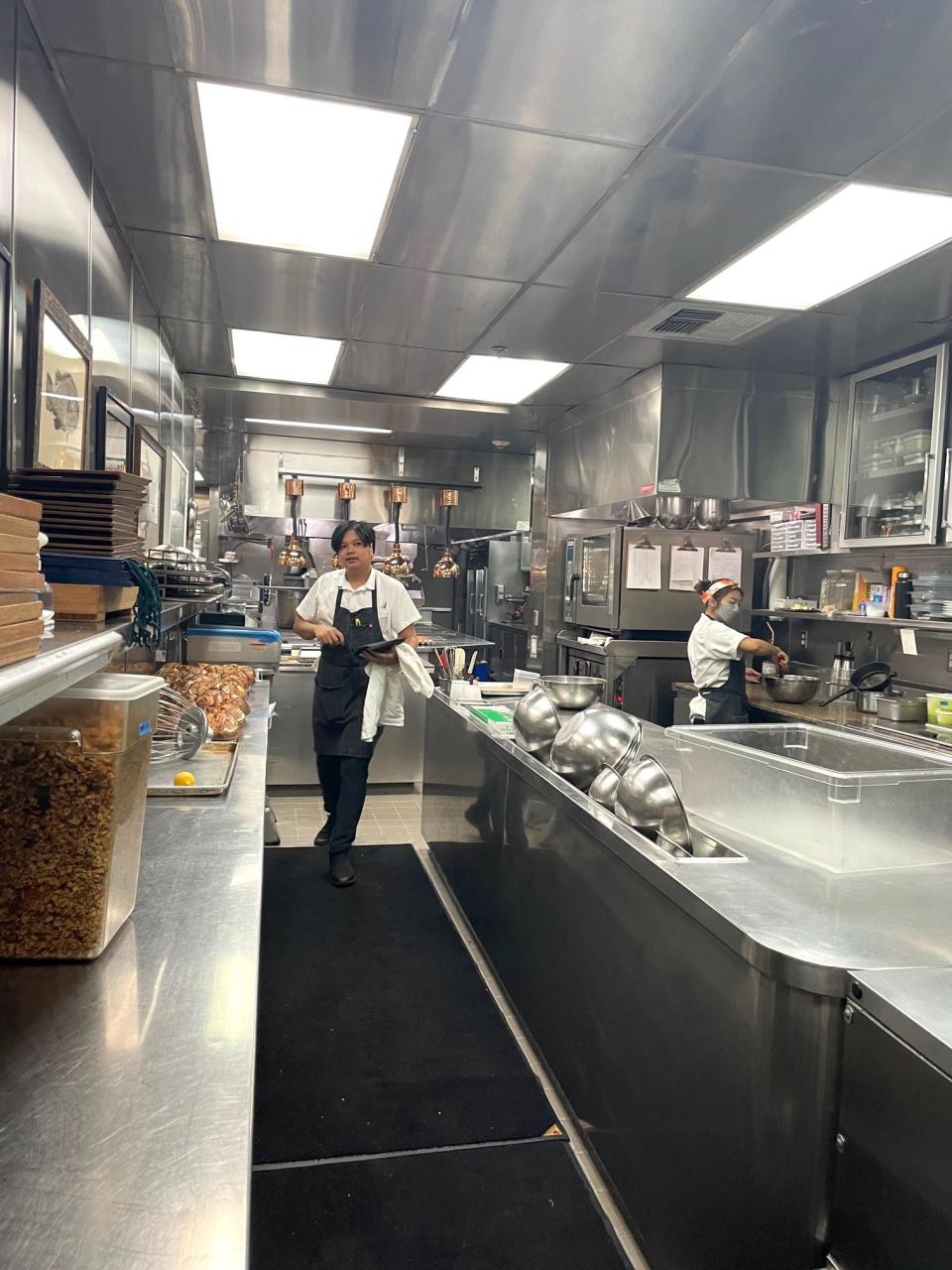
I walked in around noon and was surprised to find that the kitchen was still peaceful. But I quickly learned that many people had already been working for hours.
Providence is only open for dinner and features a set eight-course menu (a vegetarian option is also offered) that starts at $295 per person. The restaurant is sold out every night, with reservations being booked up weeks or months in advance.
Cimarusti explained that shifts at Providence are broken into a.m. and p.m. The prep cooks and fishmongers come in at 7:30 a.m. and leave around 4:30 to 5 p.m. The rest of the staff — including the line cooks and sous-chefs — come in at 2 p.m. and leave around midnight or sooner, depending on the night. Cimarusti and Aitchison both typically come in around 10 a.m. and usually don't leave the restaurant until around 11 p.m.
The days are long, but Aitchison told me the hard work is worth going to the kitchen every day and "being able to use my hands to create something."
"It might not always make it onto the menu, but every day is different, so it sparks a lot of opportunities to try something new," he added. "I like the unknown of what each day is going to provide."
While the kitchen slowly comes to life, Cimarusti and Aitchison sit down to discuss any changes to the menu and what they can improve from the night before.
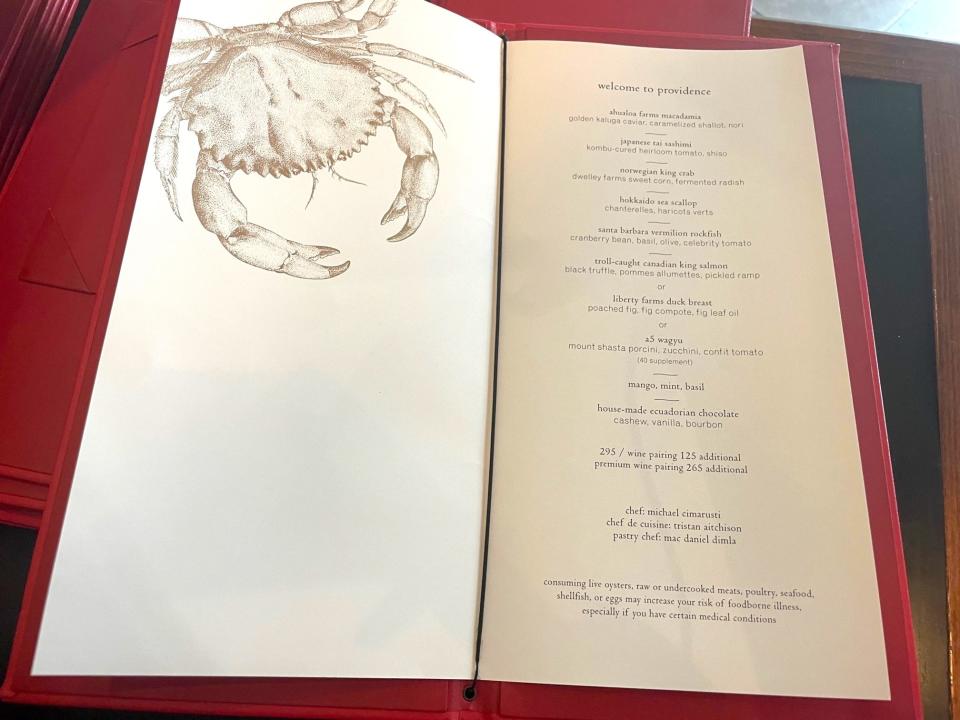
The dishes at Providence change frequently, and Cimarusti told me the kitchen practices each dish "hundreds of times over the course of several weeks" before it ends up on the menu.
"Once we get to a point where the dish is just perfect and everyone gets it, that's when it has to come off," he said.
As I walked around the kitchen, I spotted a handwritten list with the names of guests coming that night. It detailed tables with larger parties, as well as any notable restrictions ("allergic to eggplant," "no coriander") so the cooks could prepare well in advance.
The list also noted returning guests and the date they were last at Providence. Cimarusti told me Providence has one guest who comes every week (and once requested an eight-course dinner he could take on his private plane).
"We try to do a different menu for him every week," Cimarusti said. "It's an incubator. A lot of those dishes that we cook for him turn into menu items at a certain point."
I first worked with Mac Daniel Dimla, a 27-year-old pastry prodigy who leads Providence's zero-waste chocolate program.
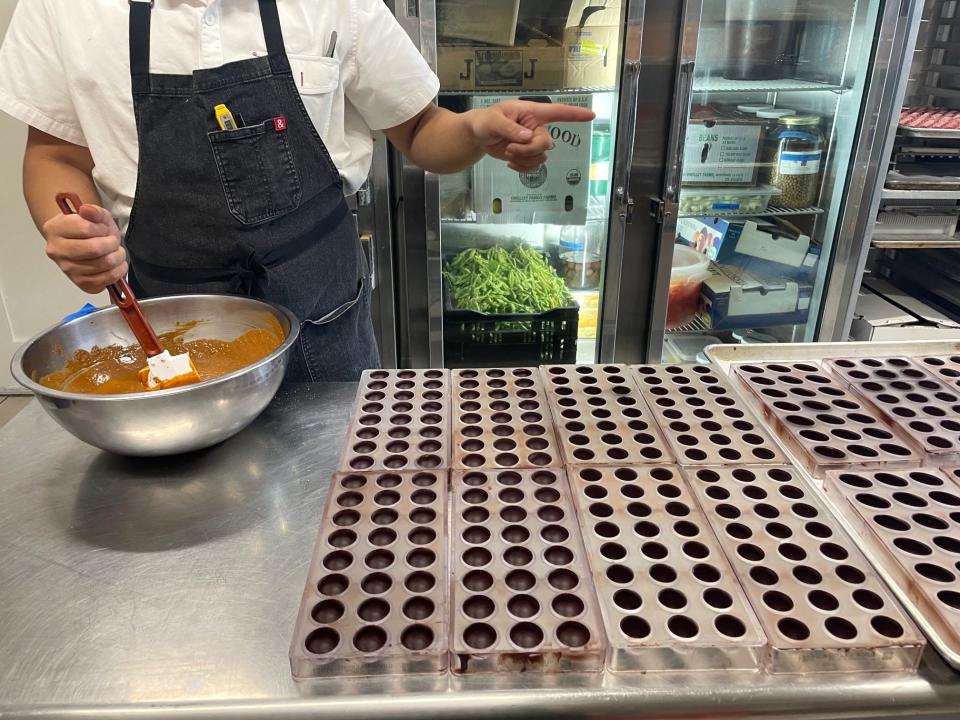
Dimla led me to a temperature-controlled room upstairs, where I was immediately greeted with the delicious scent of chocolate.
Every month, Providence receives 100 pounds of raw cacao beans that have been sourced from Hawaii, Dimla told me. Each and every bean is inspected, processed, and roasted by the four-person pastry team.
All the restaurant's chocolate is made in-house and nothing goes to waste. Dimla turns the leftover cacao husks into chocolate tea.
After filling a piping bag with fresh chocolate, Dimla showed me how to fill the molds.
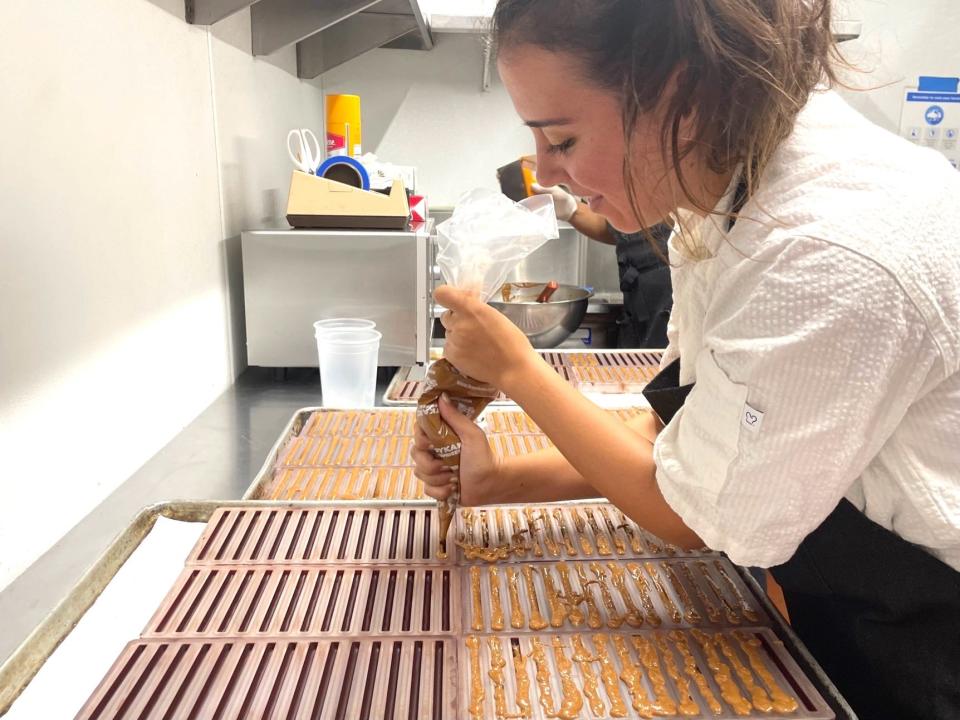
Dimla expertly squeezed the bag as he went down the line of molds and, within seconds, his tray glistened with the sesame-praline chocolate ganache. It was almost soothing to watch.
I took my place next to Dimla and tried to mimic his technique, filling one mold in the time it took him to do 20. He waited patiently as I tried to catch up — squeezing chocolate was way harder than it looked.
@foodinsider Do you think you’d be good at making this chocolate dish? #finedining #michelinstar #chocolate #chocolatier #foodinsider ♬ Sunshine - WIRA
Then I returned to the kitchen to watch the prep cooks.
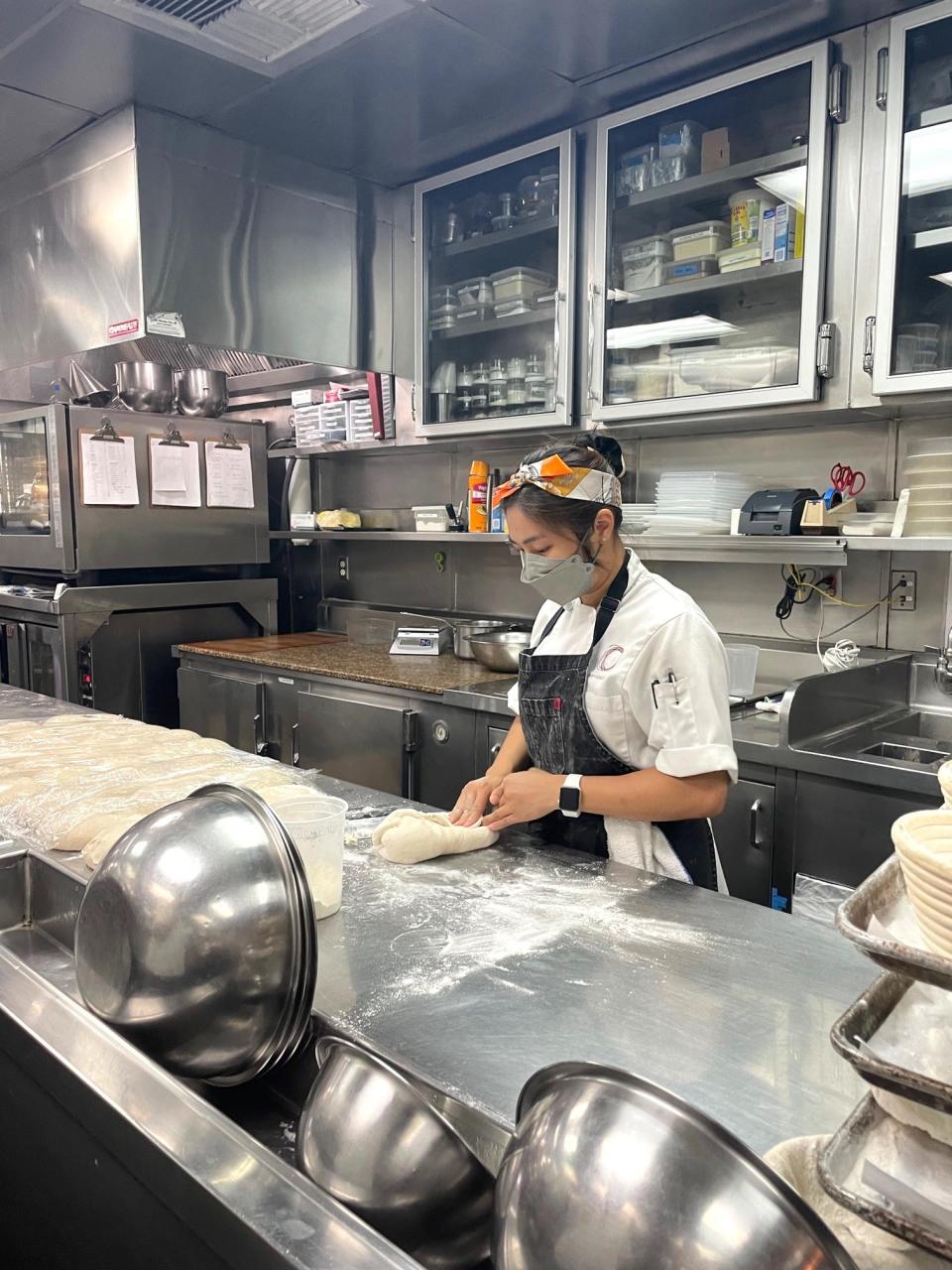
I gazed in wonder as one of the cooks kneaded balls of dough, skillfully folding, tucking, and rolling each one along the flour-covered stainless steel tabletop.
Cimarusti explained that she was prepping the dough for the following night's dinner service. Each ball sits overnight and slowly proofs under refrigeration.
As I visited various cooks at their stations, I was surprised to learn that cooking was a second career for a number of them. One started culinary school after years in fashion, while another had switched from being a pharmacist.
"I started at the bottom, bottom, bottom," one sous-chef told me. "It's similar to any industry where, once you master that station or level, you're like, 'OK, I'm ready to progress to the next thing.'"
Meanwhile, on Providence's rooftop garden, the bees were also working hard.
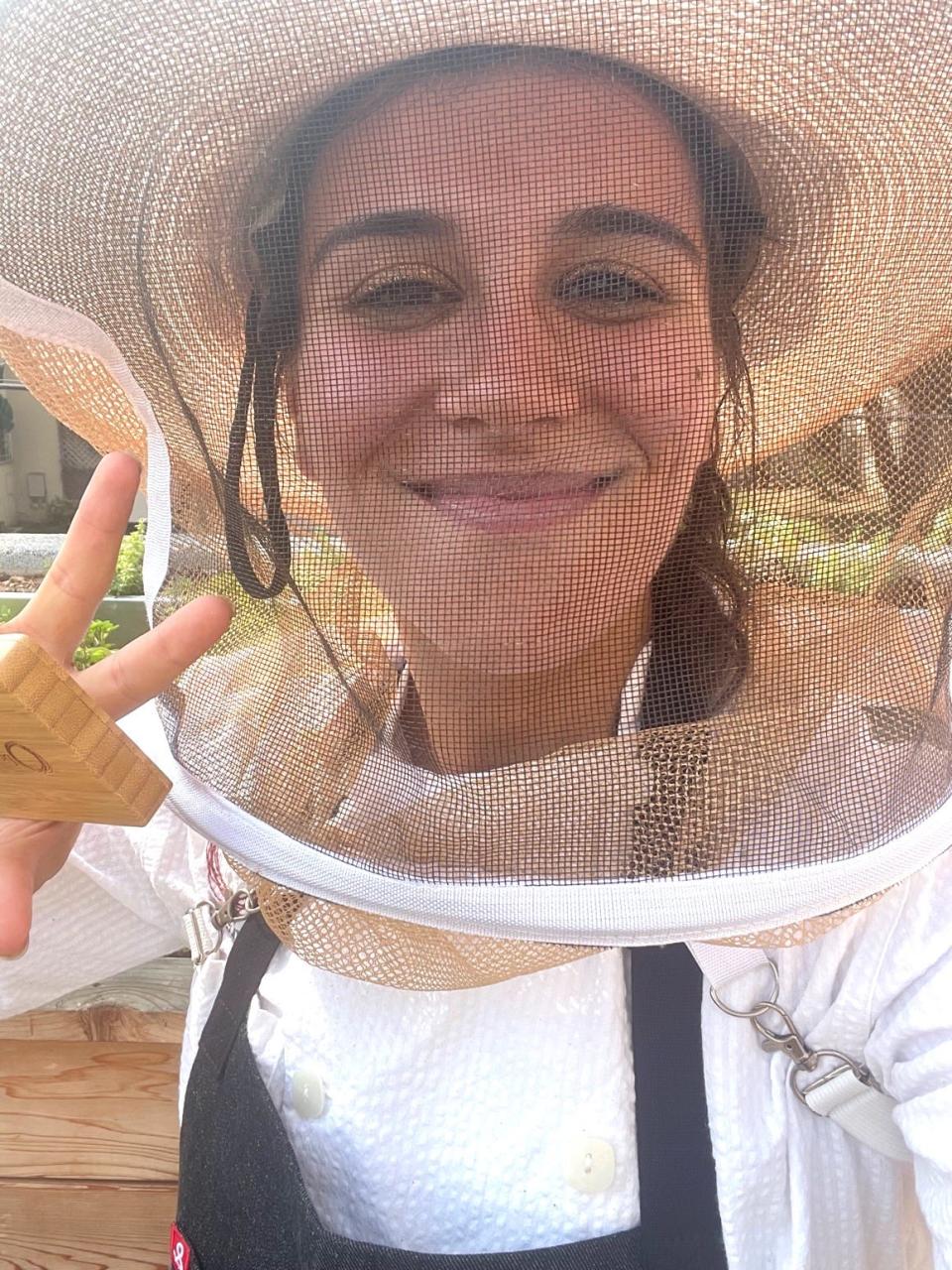
Providence has an on-site rooftop garden, where the staff grows everything from wasabi arugula and strawberry spinach to Japanese mustard greens and Greek basil. The garden uses recycled water, including melted ice from the kitchen, and provides many of the fresh ingredients seen in the restaurant's famous cocktails and dishes.
After putting on a protective hat and veil, I got to check out Providence's two beehives, which spin fresh honey for the restaurant on-site.
I was ready for a drink, so I swung by Providence's bar.
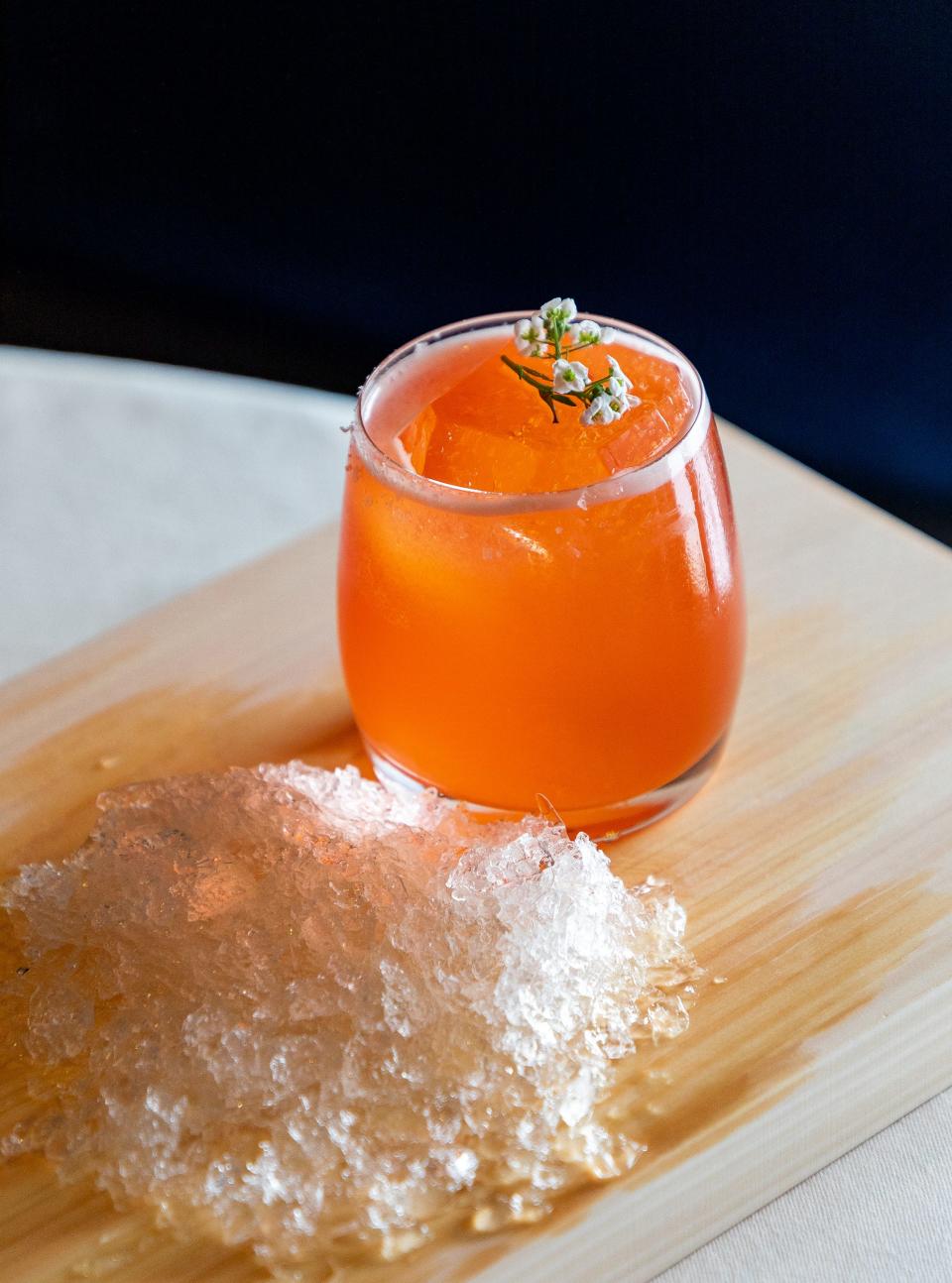
A true shift in a Michelin-star kitchen likely wouldn't include luxury cocktails, but I wanted to spend some time chatting with Kim Stodel, Providence's bar director.
Stodel previously showed me how he made Providence's famous $100 margarita, which is part of his tableside cocktail program that features one-of-a-kind drinks.
Providence's bar is as committed to sustainability as the kitchen, and Stodel is constantly breathing new life into leftover ingredients. The shells of snap peas are seasoned with citrus and sugar to flavor some gin. The pulp of a raspberry is turned into powder that can be dusted over a passion-fruit mocktail.
Then it was time to check out Providence's wine cellar.
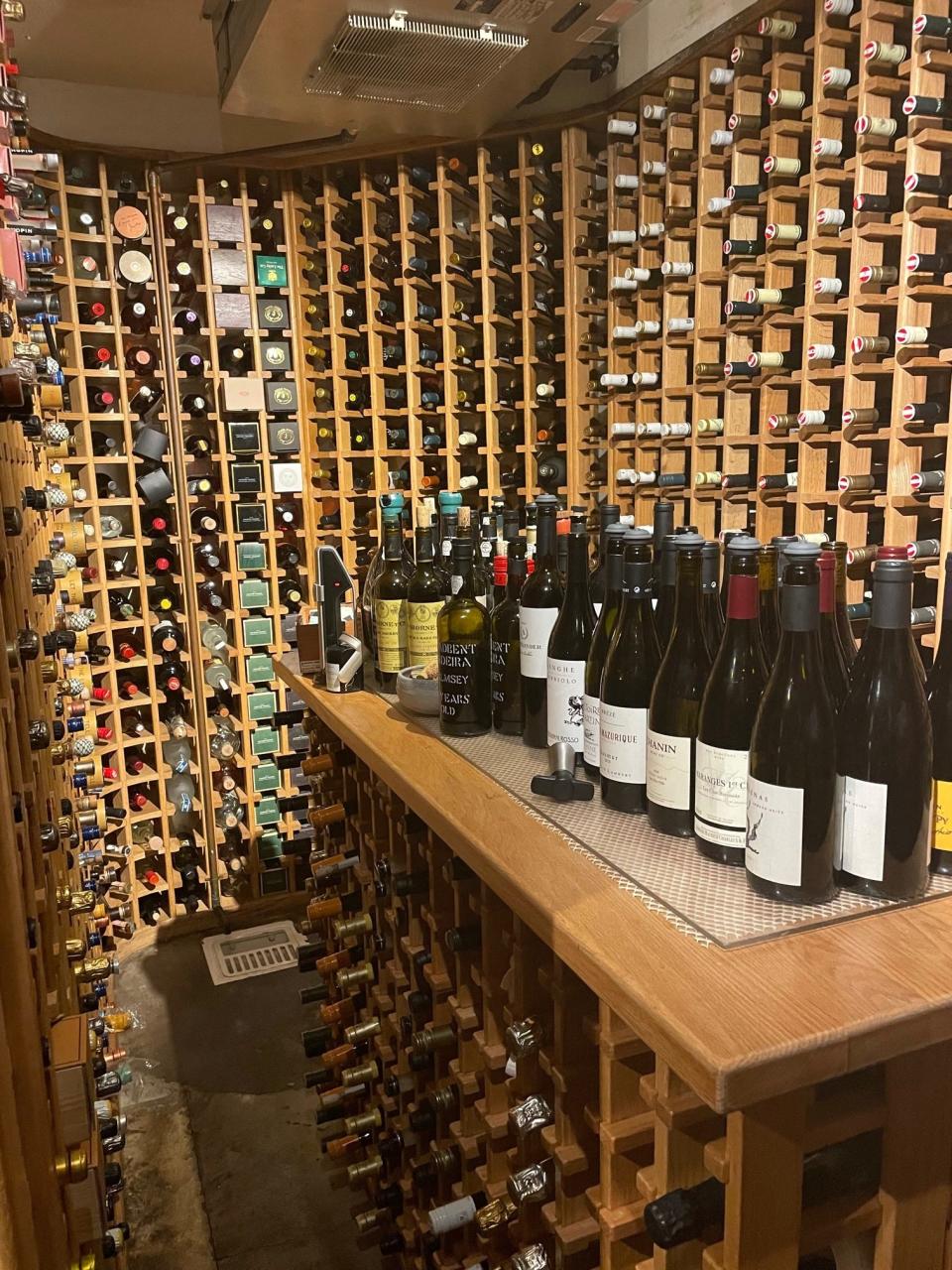
David Osenbach, a level three sommelier and Providence's wine director, creates the wine pairings that can be ordered with the tasting menu. "This is where the magic happens," he declared as we walked into the chilly 55-degree room, where wine bottles filled nearly every inch of space.
The wine pairing at Providence sometimes changes more than the menu, and Osenbach told me he likes to pick bottles that people normally wouldn't buy for themselves.
"Sometimes that throws people off a little bit," he said. "They're like, 'I've never heard of any of these wines,' and I'm like, 'That's the point!'"

 Yahoo Autos
Yahoo Autos 